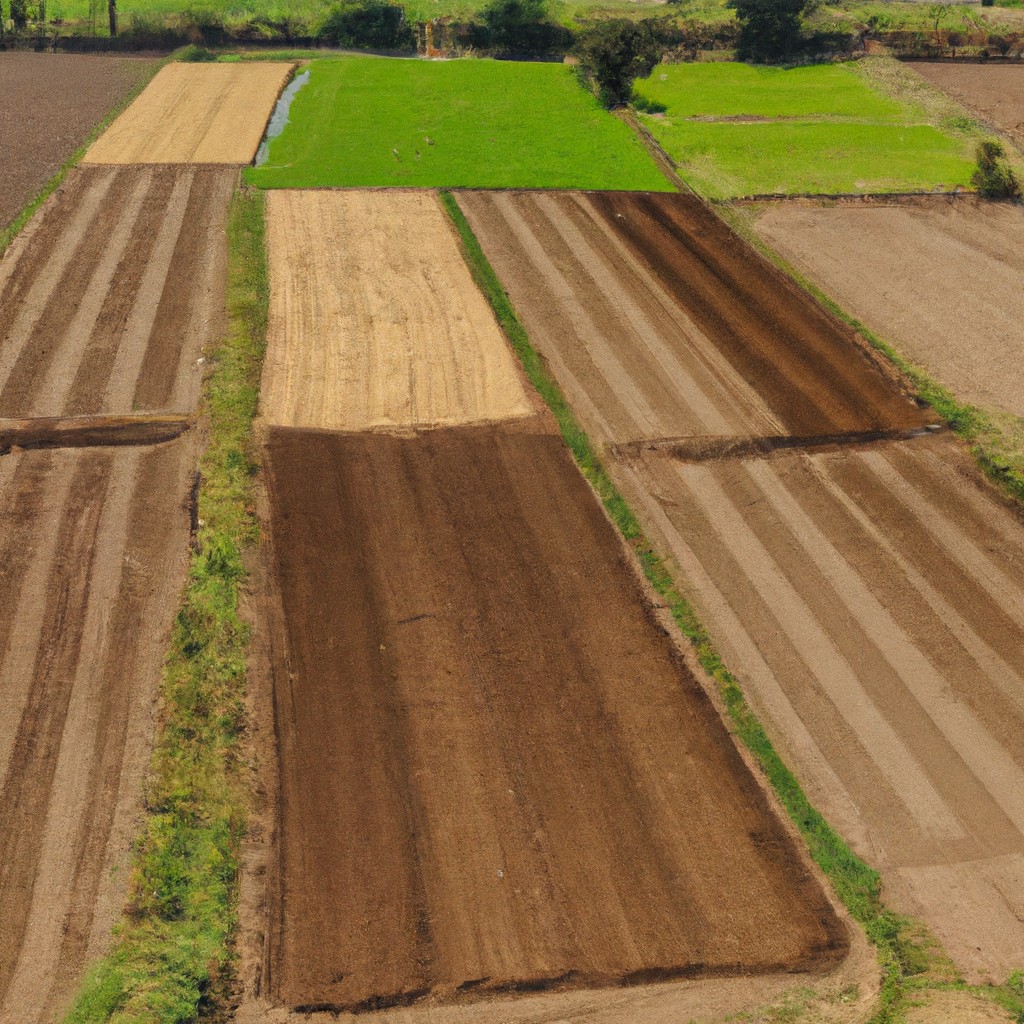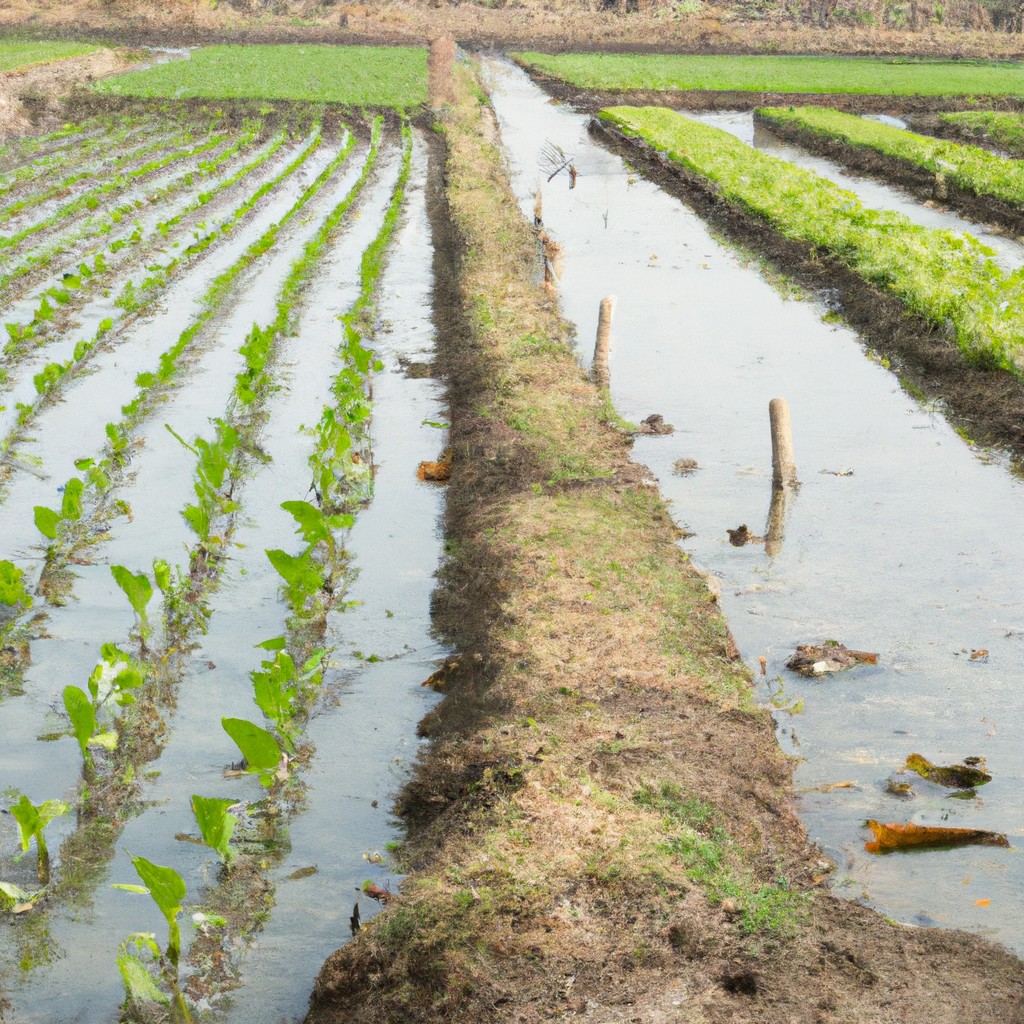Discover how Aztec agriculture employed innovative techniques to sustainably cultivate crops in challenging environments.
Look Inside:
Organization & Methods

Aztec society was a tapestry of sophistication, particularly in farming. Their hierarchical system had nobles overseeing the well-oiled agricultural machine where farmers knew their roles by heart. Families were given plots of land and expected to produce not just for themselves, but for the whole community, including the ruling class and priests.
Land stewardship was a civic duty. With astute observation of the sun and stars, the Aztecs planned their planting cycles with precision. They respected the delicate balance of the ecosystem, weaving sustainability into the very fabric of their agricultural practices. Water management was pivotal, and they developed intricate irrigation systems to quench thirsty crops, using canals and aqueducts to guide the life-giving resource from distant sources.
Community effort streamlined the workload. By pooling their labor, Aztecs built and maintained terraces on hillsides, preventing soil erosion and increasing the arable area. Cooperation wasn’t just neighborly; it was a cornerstone of productivity. In this way, the seeds of community and agriculture grew hand in hand, showcasing a level of organization that rivalled even the tallest maize stalk in their lush fields.
Chinampas
Dubbed the “floating gardens,” chinampas were ingenious agricultural innovations, resembling rafts richly layered with sediment from lake beds, creating fertile plots on the water. Picture a patchwork quilt of green, floating on the calm surface, teeming with life and sustenance.
Farmers in the Aztec civilization crafted these platforms from woven reeds, anchoring them with willow trees. The willows’ roots would extend into the lakebed, securing the chinampa while benefiting the soil above with their nutrient uptake.
This approach offered several benefits: easy irrigation, since crops were surrounded by water, and healthier plants, as the water provided a temperate microclimate, warding off frost. Moreover, the proximity to Tenochtitlan enabled quick transport of harvests by canoe—a veritable express lane from farm to market.
Employing the chinampa system, Aztec farmers were able to cultivate crops multiple times a year, which was pivotal to supporting the dense population of their great city. Through this method, they harnessed the benefits of both land and water, demonstrating an extraordinary harmony with their environment.
Crops
Diversity was the spice of life in the Aztec fields. Corn, or maize, took the center stage in their diet and was revered for its versatility. Beans, trailing up the sturdy maize stalks, were the unsung heroes, fixing nitrogen in the soil and packing a protein punch in the diet. Squash sprawled across the ground, its broad leaves shading out weeds, while chilies added a fiery kick to their meals and medicinal herb gardens.
Seasonal timing was crucial; the Aztecs had an intricate calendar aligning agricultural cycles with celestial events. They highly valued amaranth, a grain sometimes shaped into deities during religious ceremonies before being consumed. The savvy cultivation of nopales, or prickly pear cacti, not only offered nutritious fruits and paddles but also textile dyes and water storage solutions.
The Aztecs also knew their superfoods. Chia seeds, rich in omega-3 fatty acids, were a staple, as were tomatoes, with their bursts of flavor and lycopene. This diverse pantry wasn’t just about sustenance — it was a reflection of their deep connection with the earth, ensuring balanced nutrition and sustained fertility of their precious chinampas.
Challenges
Even the most ingenious farming systems face their share of hurdles, and the Aztecs were no exception. Their primary adversary? The very lake that sustained them. While the waterways provided a means to transport goods, they also brought unpredictable flooding which could wreak havoc on the chinampas, demonstrating that nature always holds the trump card.
Water wasn’t their only challenge. Soil fertility was a constant battle, requiring frequent dredging of canal mud to enrich their plots. This labor-intensive task was a true test of endurance and offered no room for lethargy.
But that’s just scratching the surface. The Aztec’s intense farming practices demanded a vast workforce, which in turn, relied heavily on the city’s social structure and the stamina of its people. Like a complex dance, these variables had to move in unison to produce a successful harvest, revealing a web of interdependencies in which each strand relied on the strength of another.
Even with their formidable will, the Aztecs couldn’t control the weather. Droughts were like unwanted guests at a feast, arriving without invitation and overstaying their welcome. These periods of arid hardship threatened food security and put the resilience of the Aztecs to the test.
So next time you marvel at ancient engineering, remember that each triumph often danced hand in hand with its own unique set of trials. It was the Aztecs’ ability to face these challenges head-on that cemented their legacy in the annals of farming history.
Remnants of Aztec Farming Today
As you peek into modern Mexico’s fertile stretches, whispers of Aztec agricultural prowess still linger. You’ll find farmers near Mexico City reviving the ancient chinampa system, creating buoyant fields that cradle crops on the labyrinth of waterways. It’s pretty nifty – like gardening on a floating patchwork quilt.
Farmers here play matchmaker between traditional techniques and contemporary science, contributing to a gene pool shimmering with heirloom varieties – corn, beans, squash – staples that once fed an empire. They aren’t just growing plants; they’re cultivating history.
Venture into local markets, where stalls spill over with produce hinting at Aztec gastronomy, a tasteful echo of practices centuries old. These bustling hubs don’t simply sell food; they weave tales of a civilization that wove agriculture into their societal fabric.
In schools and community programs, you’ll find a growing appetite for knowledge of pre-Hispanic agricultural wisdom. Educators and environmentalists join forces, planting seeds – both literal and intellectual – to root the next generation in sustainable practices championed by the Aztecs.
Right then, let’s tip our hats – or maybe our feathered headdresses – to these enduring remnants of Aztec farming. They keep the past alive, feeding both body and soul, and most importantly, they remind us that good things grow when we remember where we came from.




